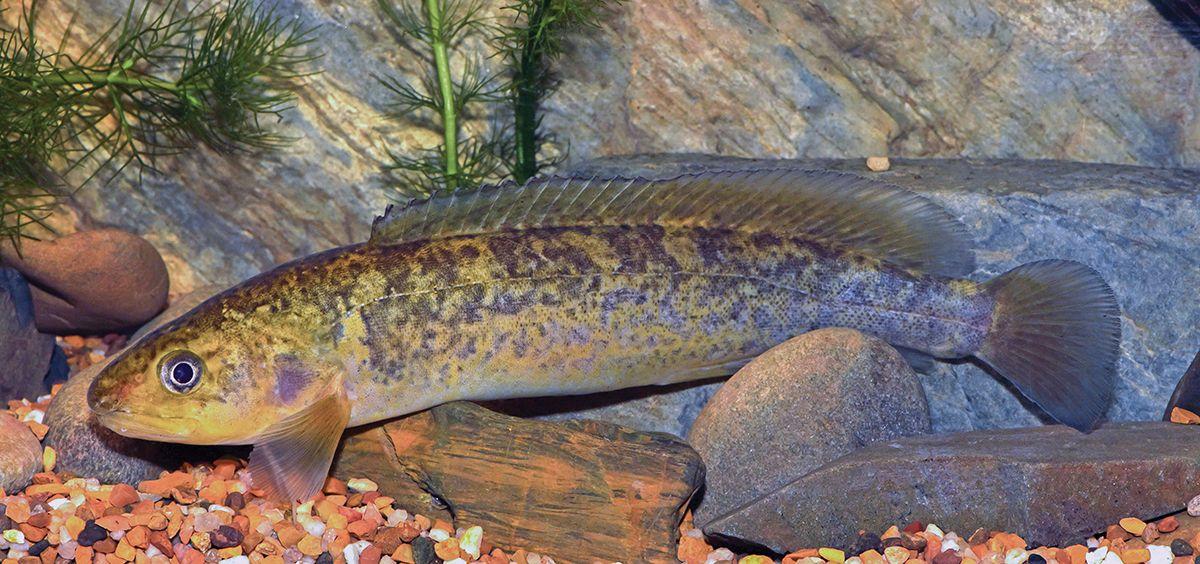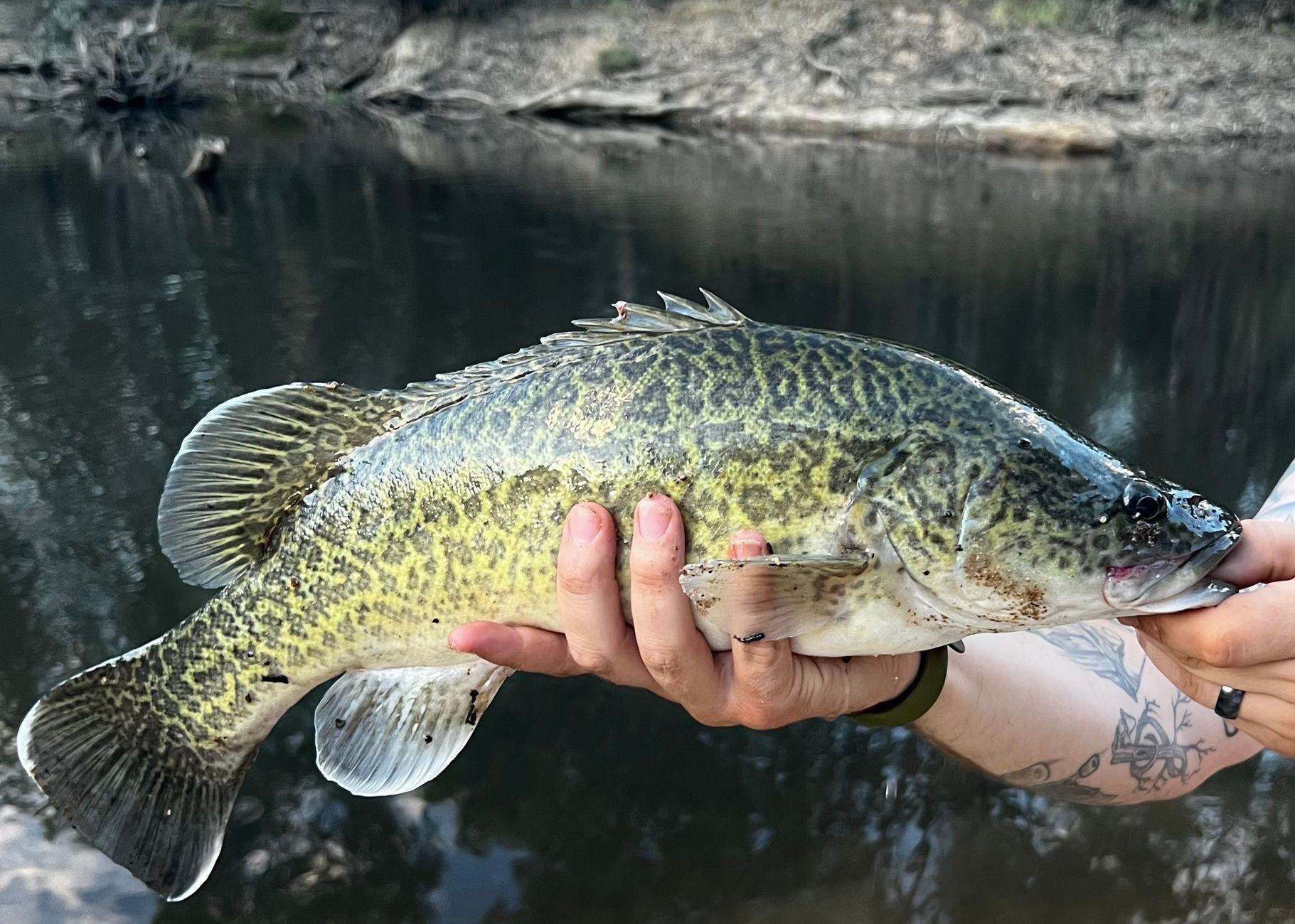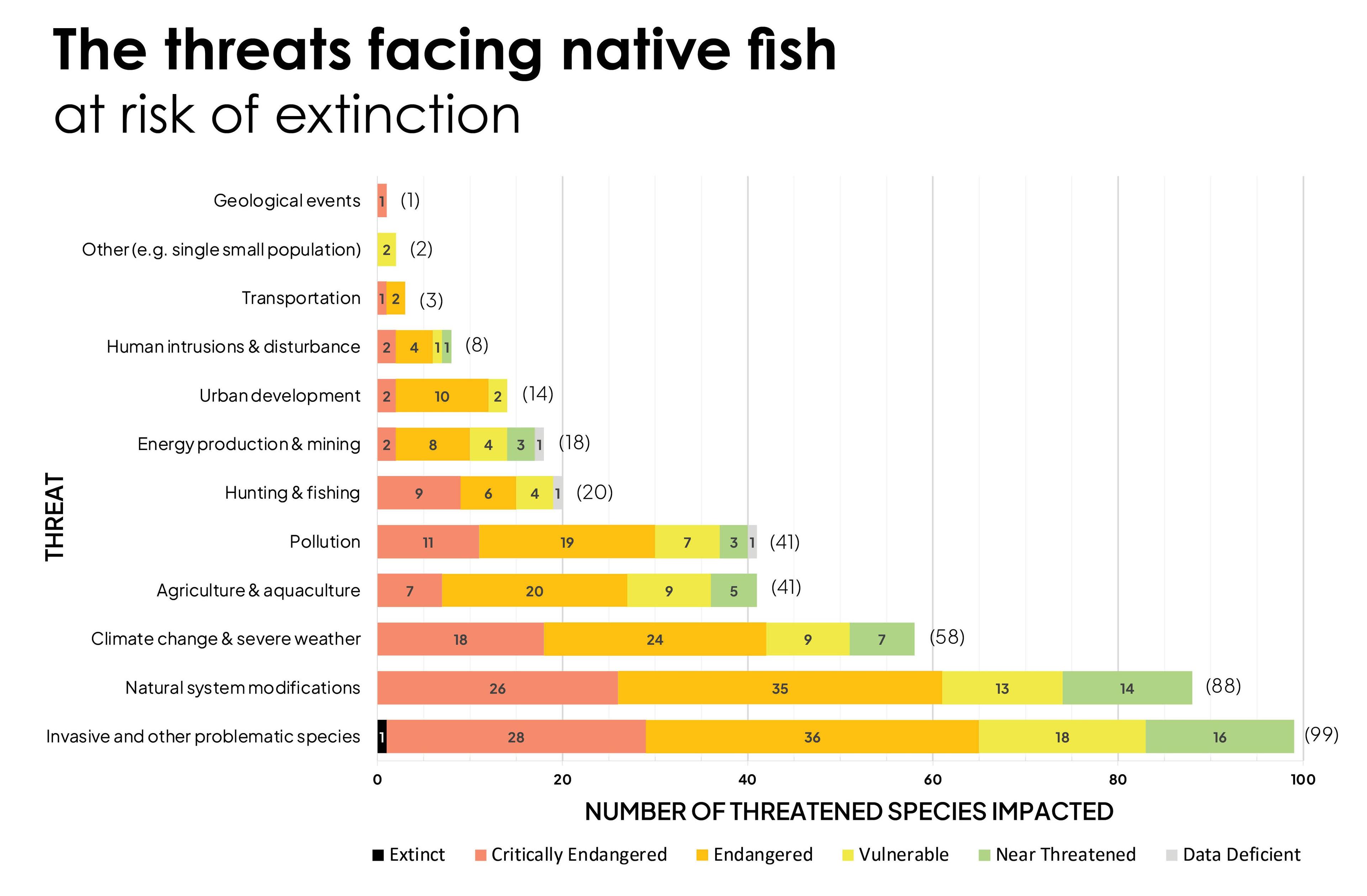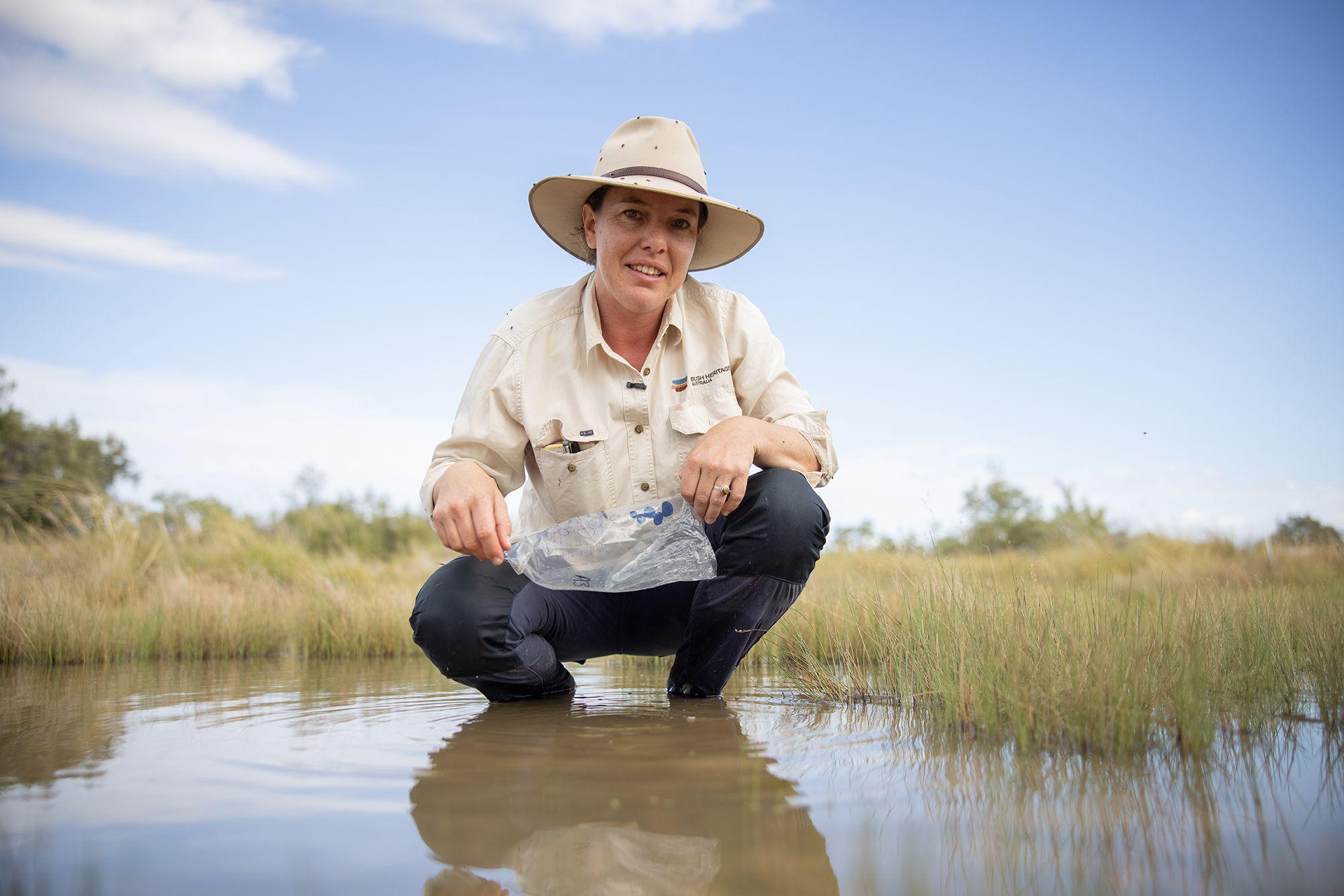Health check of Australia’s native freshwater fish finds one-third need emergency room

The Angalarri grunter is declining due to degraded habitat and water quality caused by livestock and feral animals. It is currently not on Australia’s threatened species list but is recommended for listing as Endangered. Image source: Michael Hammer.
News story
15 November 2024
A team of 52 scientists have carried out the first ever comprehensive assessment of how well Australia’s native freshwater fish species are doing. The study just published in Biological Conservation has revealed that around one-third are now threatened with extinction.
The Biodiversity Council says that the assessment has been vital to identify fish species that are at risk of extinction but not yet on anyone’s radar, and also to provide guidance to underpin an evidence-based response.
Biodiversity Council Director James Trezise said:
"This study highlights the pressing need for governments to tackle invasive fish and invest in environmental flows for our inland rivers, lest we see our native fish species disappear forever.
"State governments have a duty to prevent the decline and extinction of native species. At the moment, Australia’s southern states are greatly adding to the problem by releasing millions of trout into waterways each year for the benefit of recreational fishers.
"We effectively have one arm of government trying to save these species, and another arm actively introducing a key threat into the environment.
"We can’t continue to turn a blind eye to the impact of invasive trout. They may make for good fishing, but devastate local ecosystems.
"Australia's native freshwater fish are a critical part of our river ecosystems. We need to ensure that governments prioritise protecting the critical habitats for these vanishing species.
"The Australian Government has committed to ending extinctions, this study shows we need to see a major step up in resourcing on-ground action, improving environmental flows and protecting critical habitats, especially from invasive trout, if we are to safeguard our native fish species for future generations."

The southwest ‘Vic’ blackfish is currently not on Australia’s threatened species list but is recommended for listing as endangered. Image: Tarmo Raadik
Study lead author Associate Professor Mark Lintermans at the University of Canberra said:
“We used the globally recognised IUCN Red List criteria to assess the extinction risk of 241 freshwater fish species.
“All of the species assessed as Critically Endangered were small-bodied fish (less than 20 cm), with the native galaxiids across southern Australia hit very hard. But many large-bodied fish such as Mary River cod and the Australian lungfish also face uncertain futures.
“63 freshwater fish are already on the national threatened species list. We identified 35 more that should be urgently added.
“They include 3 Critically Endangered species in Western Australia – the Barrow Cave, slender carp and Drysdale gudgeons – and 14 Endangered species including the Australian mudfish and Utchee rainbowfish in Queensland.
“An accurate threatened species list is important. When species are in trouble but not yet on our national threatened species list they miss out on basic protections and are very unlikely to receive any conservation attention.
“We also identified 17 species that the government should reassess. For example, northern Australia’s freshwater sawfish is currently listed as Vulnerable but the evidence indicates that it is now Critically Endangered.
“A sliver of good news is that the Murray cod, a favoured sport fish across eastern Australia, is doing better and could be assessed to be removed from Australia’s threatened species list.”

The Murray cod, a favoured sport fish across eastern Australia, is doing better and could be assessed to be removed from Australia’s threatened species list. Image source: Kagan Vainisi CC-BY-NC / iNaturalist.
Co-Author Dr Nick Whiterod at the Goyder Institute for Water Research Coorong, Lower Lakes and Murray Mouth (CLLMM) Research Centre said that identifying species at risk is very important but is just the first step in preventing extinctions.
“To prevent extinctions we need to understand and address the things that are causing species to decline.
“Although resources for freshwater fish conservation are very limited, our analysis revealed a disconnect between the most common threats driving native fish declines, and the most common conservation actions being employed.
“We found that invasive species, such as trout, are a major threat to 92% of the species identified as of conservation concern, but invasive species control and prevention programs are only in place for only 21% of those species.
“The second most prevalent threat to native fish is human modifications to ecosystems and flows, such as damming rivers, blocking flows on to floodplains, extracting water and changing natural water flow patterns.
“Yet the most commonly occurring conservation actions are being in a Protected Area or conservation area, monitoring and planning, and education and awareness programs.
“Current conservation efforts are insufficient to prevent extinctions. To prevent extinctions we need major new conservation action to tackle the impact of invasive fish and to improve water flow regimes.”

The number of freshwater fish species of conservation concern that are impacted by the 12 most prevalent threats. Numbers in brackets at end of bars are the total number of species impacted by that threat.
Study co-author and freshwater fish biologist Dr Amy Tims from Monash University said that the invasive fish that are having the worst impact on the most native species are brown trout and redfin perch from Europe and rainbow trout and eastern gambusia from the Americas.
“It is hard to overstate the catastrophic impact that trout have had on our smaller native fish in southern Australia. 31 of our 40 galaxiid species are now threatened with extinction.
“Many are just hanging on. For example, the barred galaxias has been lost from 95% of its former streams and the stocky galaxias is only hanging on in one small stream above a waterfall that trout have not yet reached.
“Millions of trout fingerlings are released by state government agencies in Victoria and NSW every year for recreational fishing, and then exert enormous pressure on native fish.
“We need to rethink those programs to prioritise some streams as invasive-fish-free-refuge areas for the conservation of native fish.”

Dr Pippa Kern at a red-finned blue-eye conservation site, where controlling invasive eastern gambusia is the aim of the game. Image: Bush Heritage Australia/Peter Wallis
Study co-author Dr Pippa Kern is an ecologist at the Australian Wildlife Conservancy who has previously worked on the conservation of one of Australia’s most imperilled freshwater fish species, the red-finned blue-eye, with Bush Heritage Australia in outback Queensland.
“Invasive eastern gambusia are the primary threat to the survival of the critically endangered red-finned blue-eye which live in small, shallow artesian springs in central Queensland.
“Although tiny, eastern gambusia are aggressive and outcompete the red-finned blue-eye for food and nip off their fins. They have caused the loss of a number of red-finned blue-eye populations and pushed this species very close to extinction.
“To reduce the risk of the red-finned blue-eye becoming extinct, we eradicated gambusia from some springs and fenced springs with material that stops gambusia from invading during periods of flooding. We could then move red-finned blue-eyes to gambusia free springs to create additional populations.”

This map shows extinction risks across Australia and some of the fish species at risk. Red areas have high risk of all native species becoming extinct. Image source: M. Lintermans, N. Whiterod and J. Dielenberg; Fish images clockwise from top left: Michael Hammer, ANGFA Qld, Brett Vercoe, Steven Kuiter, Inland Fisheries Service, Gerald R Allen, Michael Hammer.

The Utchee rainbowfish is currently not on Australia’s threatened species list but is recommended for listing as Endangered. It is struggling due to habitat loss and water pollution from agriculture surrounding the small number of streams where it occurs in north Queensland. Image: ANGFA Qld













